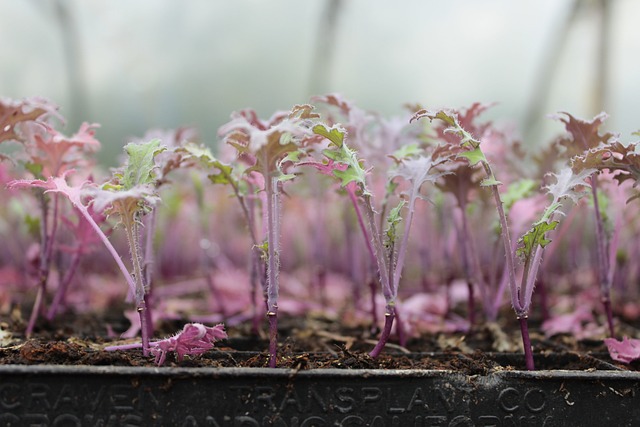
Greenhouses are essential for farmers and gardeners who want to extend their growing season. However, traditional greenhouses can be expensive to heat, especially during the colder months. This is where solar heating comes in. Using the sun's power, you can efficiently warm up your greenhouse without breaking the bank. This article will explore why switching to a solar-heated greenhouse is an intelligent decision.
Introduction to Solar heater for greenhouse
Solar heaters use the energy from the sun to generate heat that warms up the air inside the greenhouse. The system typically consists of a series of pipes or tubes filled with water that runs through the greenhouse. During the day, the sun's rays heat the water, releasing the heat into the surrounding air at night. These systems are highly efficient because they capture free energy from the sun and convert it into usable heat.
The Benefits of Using a Solar Heater for Your Greenhouse
There are several benefits to using a solar-heated greenhouse. Firstly, these systems are incredibly cost-effective. Once installed, there are no ongoing fuel costs, making them much cheaper than traditional heating methods such as electricity or gas. Secondly, solar heating is environmentally friendly. It produces zero emissions, making it a clean source of energy. Thirdly, solar-heated greenhouses provide consistent temperatures throughout the year, creating an ideal climate for growing plants. Finally, these systems require little maintenance, reducing the overall cost of ownership.
How to Choose the Best Solar Heating System for Your Greenhouse
When choosing a solar heating system for your greenhouse, there are several factors to consider. Firstly, determine the size of your greenhouse and calculate how much heat is required to maintain the desired temperature. Next, choose a system that fits your budget while meeting your heating needs. Many different types of solar heating systems are available, including passive, active, and hybrid. Passive systems rely on natural convection currents to circulate air, whereas active systems use fans or pumps to move the air. Hybrid systems combine both passive and active technologies for maximum efficiency.
Installing and Maintaining a Solar Heated Greenhouse
Installing a solar-heated greenhouse requires careful planning and attention to detail. Start by selecting a reputable contractor who has experience installing these systems. They will help you design a system that meets your needs and ensure all components are correctly sized and configured. After installation, regular maintenance is necessary to keep the system running smoothly. This includes inspecting the pipes and tubes for leaks, cleaning the collectors, and ensuring the system functions correctly.
Conclusion: Why Switching to a Solar-Heated Greenhouse is a Smart Decision
Switching to a solar-heated greenhouse is a wise investment for anyone looking to reduce their carbon footprint and save money on heating costs. With proper installation and maintenance, these systems can provide years of reliable service while helping you grow healthy crops. So why wait? Make the switch today and start enjoying the benefits of solar heating!
Say Goodbye to High Energy Bills with a Solar Heated Greenhouse
Introduction to Solar-Heated Greenhouses
Greenhouses are an excellent way to grow plants and vegetables all year round, but they can be expensive to heat. With the rising costs of energy bills, many gardeners are turning to solar heating systems as a cost-effective solution. A solar-heated greenhouse uses renewable energy from the sun to warm up the interior space, providing a comfortable environment for your plants to thrive.
The Benefits of Using a Solar Heater for Your Greenhouse
There are several benefits to using a solar-heated greenhouse:
1. Lower energy bills - By harnessing the sun's power, you can significantly reduce your reliance on traditional forms of heating such as electricity or gas. This means lower energy bills and more money in your pocket.
2. Eco-friendly - Solar heaters produce no emissions, making them an eco-friendly option that helps to reduce carbon footprints.
3. Increased plant growth - The warmer temperatures provided by a solar-heated greenhouse can help promote faster plant growth and better yields.
4. Longer growing season - A solar-heated greenhouse allows you to extend your growing season beyond what is possible with conventional methods. You can start seedlings earlier in the spring and keep your greenhouse producing well into the fall.
How to Choose the Best Solar Heating System for Your Greenhouse
When choosing a solar heating system for your greenhouse, there are some essential factors to consider:
1. Size of your greenhouse - The size of your greenhouse will determine how much heating capacity you need. A more giant greenhouse requires a more powerful solar heating system.
2. Climate - If you live in a colder climate, you may need a more robust solar heating system than someone in a milder climate.
3. Cost - Solar heating systems can be initially expensive, but they often pay for themselves over time through reduced energy bills. Look for quality products at an affordable price point.
FAQs About Solar Heated Greenhouses
What if it's cloudy? Will my solar-heated greenhouse still work? Yes, even on overcast days, your solar-heated greenhouse should continue functioning. However, it may not perform as efficiently as on a sunny day.
Can I install a solar heating system myself? It depends on your level of experience and comfort with DIY projects. Some solar heating kits come with detailed instructions and can be installed by anyone with basic hand-person skills. However, it may be best to hire a professional installer for more complex setups.
Will a solar-heated greenhouse provide enough heat during the winter months? Depending on where you live, a solar-heated greenhouse may not be sufficient to maintain optimal temperatures during the coldest months of the year. You may need to supplement your heating system with additional heat sources, such as a backup electric heater or propane furnace.